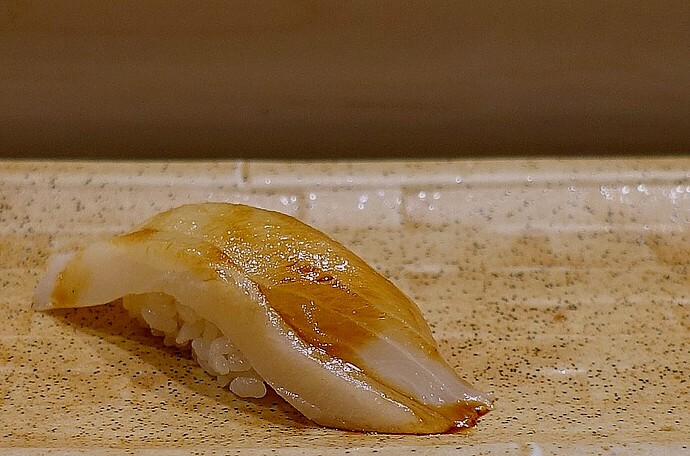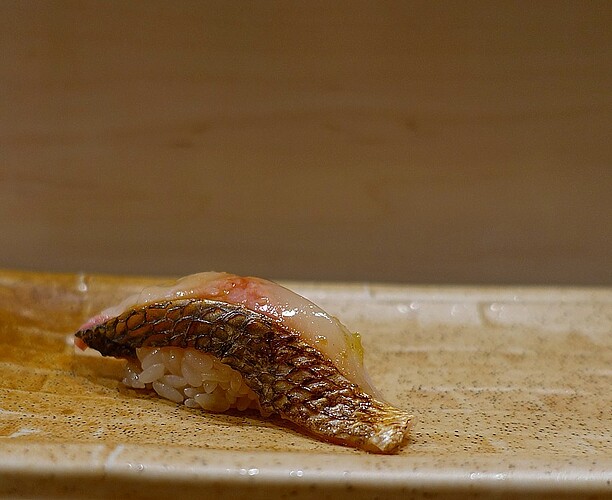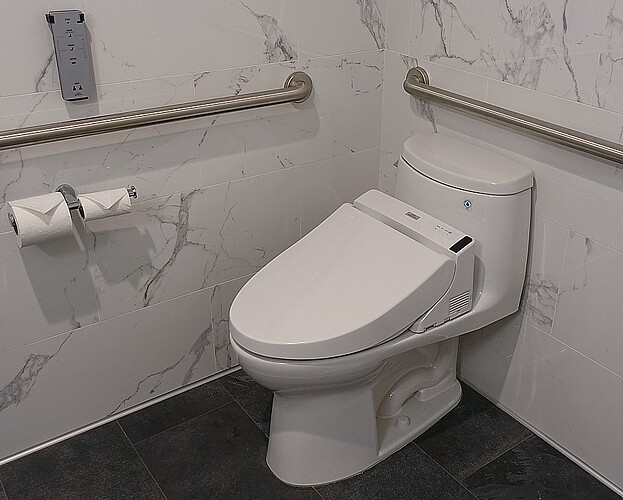Another off-the-radar change of ownership, this time in Westwood (Tehrangeles, to be exact), has led to a marvelous new sushi omakase discovery: Masakazu.
Masakazu stealthily soft-opened just after the new year, and I went within its first week of grand opening (last week). Unlike Sushi Masu (its predecessor in its location) Masakazu proudly offers no cut rolls and no hand rolls. It is a straight-up legit omakase contender. The itamae, Chef Shin Akazawa, has worked previously at Sushi Sushi, and in Shibuya before that.
Décor: A really nice brand new buildout; this West LA counter would not at all look out of place in Japan. The bar seats eleven, and there is also a four-top, as well as a two-top table. But the outside signage is piecemeal - Simply a sad name patch over the old “Sushi Masu” frontage. Perhaps that’s why no one was in the joint when I stepped in the other night.
Sake: Mizubasho (ginjo, Gunma Prefecture)… A fruity essence, medium dry, really nice.
Otsumami: Albacore salad with ponzu miso sesame vinaigrette, uni… All the parts here work to achieve harmony on the palate.
It’s nigiri time!
Birru: Sapporo Reserve Beer… One of my go-to favorites to accompany nigiri!
First off, the shari at Masakazu is pristine. There is subtle use of red vinegar, which meshes well with the chef’s personal experimentation using various types of miso with his nigiri pieces. The chef apologized on my visit that the shari was a tad cooler than what he usually serves, but nonetheless I enjoyed the rice here immensely.
Akami, honmaguro (lean farmed bluefin tuna, Spain)… Made even more complex and beautiful from slight aging, this farmed tuna is every bit as good as the wild bluefin I’ve tried in the past from Japan.
Hagashi toro (fatty belly Bluefin farmed tuna, Spain)… Hagashi is not your average cut of toro, by any means! The knifework involved in separating sinew from edges of the tuna belly hagashi toro is arduous. The result: Complete decadence! The pillowy rice here is really exemplary in drawing out the rich notes from the neta in this piece of heavenly nigiri.
Buri (Japanese amberjack)… Always a winter favorite. The nikiri (sweet soy glaze) the itamae uses is very interesting - not too sweet, but allows the fattiness to linger in the mouth for a tad longer. Omoshiroi!
Sake (salmon) with miso… Miso plays surprisingly well here.
Tai (sea bream)… A smooth transition from the over-the-top gustatory high from that last bite, the tai is a nigiri stalwart.
Katsuo (skipjack tuna) & binnaga maguro (albacore tuna) with miso and negi (scallions)… The thought here is to present the “other” tunas that exist out there. Too often, the focus is on bluefin. The miso nikiri highlights the different, denser characteristics of these pieces.
Marinated cherry tomato and celery… A tasty tidbit to cleanse the palate.
Seared toro with red and white miso, garlic oil, negi… This was outstanding! Reminiscent of Cantonese-style steamed fish. An utterly fantastic bite!!! This reminded me most of the topping wizardry that is a hallmark of Sushi of Gari. Definitely one of the bites of the month!
Aji (horse mackerel) with negi and ginger… Excellent hikarimono. Once more, the nikiri really accompanies well with the sharpness of the mackerel.
Hotategai (scallop), with truffle and yuzu kosho… Just a hint of truffle adds a new dimension to the soft scallop. Intriguing.
Madai with miso, negi and yuzu kosho… Balanced seasoning makes for a satisfying re-introduction to the snapper family in this omakase.
Renkodai (yellow-backed bream, Kyushu) with truffle and yuzu kosho… Both the fish and the yuzu kosho hail from the Kyushu region of Japan. Again, the gentle application of truffle flakes does not overpower the sushi here.
Grilled hake with mixed miso glaze, topped with sesame… An unusual interlude from the parade of nigiri, this flaky, tender fish was brushed with a mixture of three different misos. Outstanding.
Ama ebi (sweet prawn, Japan)… Gorgeous. Finally, a chef who tops the spot prawn nigiri with its own ebi miso (shrimp tomalley, or shrimp innards)!!!
Ama ebi broth, whitefish and shiro miso… Ebullience in a bowl.
Nama ikura (steelhead salmon roe)… Really great “pop” on each egg, this roe was of highest quality. And that nori! My word, so tender and flavorful!
Murasaki uni (purple sea urchin roe, Santa Barbara)… Expensive supplement to my standard omakase, but that intro piece of uni in my otsumami was so superb, I had to have it (and that dreamy nori) again!
Tamago… Somewhat unusual in preparation, there is no fish or shrimp paste used. Instead, dashi is utilized to great effect here, with a really nice fluffy texture.
Dessert time!!!
Dorayaki… Wow. I have eaten this ubiquitous street food item all over Japan, but never have I encountered as delicious a form as was served to me at Masakazu! It is subtly sweet, as punctuated by the anko (red bean paste), but then there is a boozy component to the mix (Grand Marnier or rum, perhaps?). The whole thing is grilled to just past the caramelization point, for yet more complexity. My friends, this indeed is dorayaki on a whole new level. Come here, if for nothing else, then for this incredible dessert!
State-of-the-art Toto!!! Straight outta Ginza. These guys are serious.
To top it all off, the chef is also a trained soba artisan to boot! There are future plans to offer limited handmade soba set meals for four or five daily lunchtime customers, and I am truly looking forward to his noodles as well. Who knows?! Maybe there will even be actual restaurant signage up front by then!
Miso, in its myriad of forms and functions within Japanese gastronomy, meets sushi here at Masakazu. My whole meal was thoroughly enjoyable. The full omakase is a great value at $120 per person. Their unique take on dorayaki alone is worth the price of admission. Service was cordial and unobtrusive. True, while it is not as traditional or edomae as some other sushi-yas around town (though it certainly “leans” towards the traditional side), the whole experience at Masakazu is extremely satisfying. There is no question the chef puts his heart and soul into everything he serves.
HIGHLY RECOMMENDED.
Masakazu
1911 Westwood Bl.
Los Angeles, CA 90025
310.421.9779




























